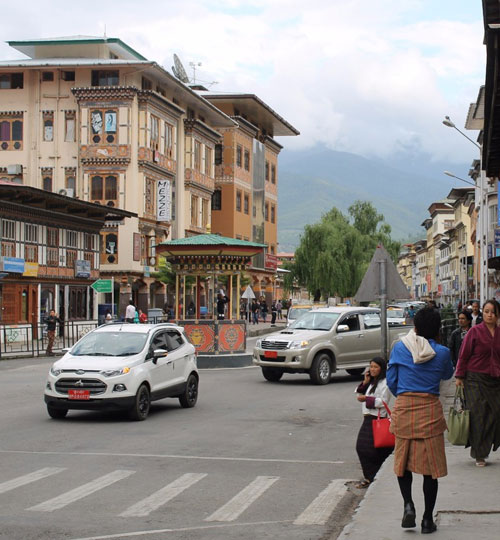Thimphu
Thimphu
Thimphu is the capital of the country and one of the most attractive destinations in the land. It has everything which can attract the urbane tourists looking for a combination of nature and typical urban development. The town is picturesque as it is surrounded by the valley and also quite happening with its restaurants, cafes, theatre, and shops. The presence of the Raidak River known locally as Wang-Chu adds color to the town. Thimphu, at an Altitude of about 7400 feet. It’s a buzzing city and yet, you will find a sense of serenity around here.
The capital
Thimphu
Interdum exercitation penatibus, praesentium facilisi accusamus fermentum, sagittis.




Major Attractions in and around Thimphu include
Simtokha Zong – Built in the year 1629 it is the oldest Dzong in Bhutan to have survived its full structure. It also happens to be the Institute of Language and Culture Studies.
Memorial Chorten – Dedicated to the memory of King Jigme Dorji who was the 3rd king of the country, it was built in the year 1974. This monument is very popular among the local people and contains some extraordinary paintings, statues, and shrines.
Traditional Medicine Institute – Albeit tourists are not allowed inside you can see it from outside. Herbal medicines are prepared here and also it serves as a training school for those who have an interest in studying the subject.
National Library – A must-visit when you are in the town. Built in 1967 it has a worthwhile collection of Buddhist Manuscripts, ancient texts, foreign language collections, and modern books.
Trashichhoedzong – Founded in 1641, it is regarded as the fortress of the glorious religion. The architectural beauty of the building is eye-catching. Though it has been built and rebuilt several times, the structure remains one of the most beautiful landmarks of the country. The present shape of the structure was built by Jigme Dorji Wangchuck – the 3rd king of Bhutan. This historical structure houses the present secretariat. It also serves as the office of the finance and home affairs minister. It is the office of the King too.
Kuensel Phodrang ( Budha Point) – As the name suggests, the place has the largest statue of Lord Buddha in the country. Located slightly out-skirts of the main town it offers a panoramic view of the valley.
Institute for Zorig Chusum – People who have an interest in arts and crafts can visit this place. The school imparts education about the 13 traditional crafts and arts of Bhutan. It contains a showroom which houses the work of the students of this institution.
Changangkha Lhakhang – The monastery was built by Lama Phajo Drukgom Shigpo during the 12th century. The central statue of Lord Buddha here is beautifully plated with gold with 11 heads and a thousand hands and eyes. This is an important pilgrimage centre for local people as the parents from the city and adjoining valleys come here with their newborn babies to get an auspicious name for them and for blessings which can protect their babies from evil forces. The valley looks dazzling from this temple.
The National Textile Museum is one of the finest museums in the country. The queen’s mother Ashi Sangay Choden played a pivotal role in establishing this museum which became a house comprising some astonishing collections of Bhutanese Textiles. The museum successfully depicts some marvellous royal dresses and accessories, the local attires and dresses and also the different kinds of weaving techniques. The museum also showcases an exhibition on an interesting subject called the significance and role of textiles in religion.
Weekend Market – Every Saturday and Sunday on the western bank of the river Wang-Chu this fascinating market takes place. A visit is recommended.
Dechen Phodrang – Known as Thimphu’s original Dzong the name means Palace of the Great Bliss. It also houses the state monastic school.
